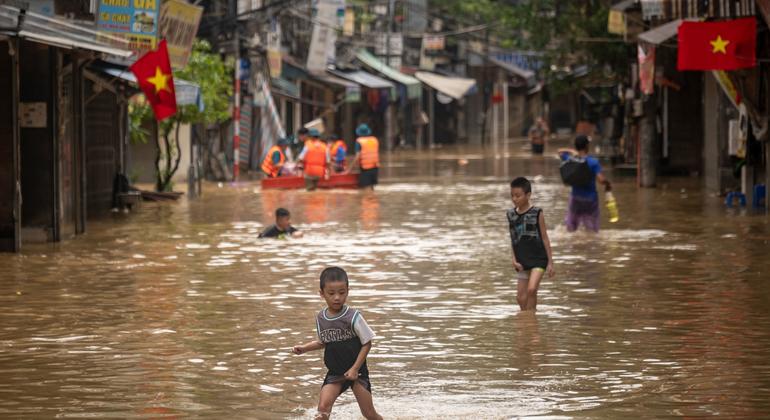Children face unprecedented challenges in 2050, UNICEF report warns


‘The State of the World’s Children 2024: The future of childhood in a changing world’explores three megatrends facing young people, including climate catastrophe, demographic shifts, and technological disparities that will dramatically reshape childhood by 2050.
“It’s shocking that it’s on the 21stst In this century, any child will still go hungry, uneducated or without even the most basic health care,” said UN Secretary António Guterres in his World Children’s Day message.
“It is a stain on humanity’s conscience when children’s lives are caught in a cycle of poverty or affected by natural disasters.”
The climate emergency threatens lives
In a stark warning, the report shows that children will be eight times more likely to be exposed to extreme heatwaves and three times more likely to be exposed to extreme river flooding than year 2000.
Following record temperatures in 2023, climate hazards are projected to disproportionately affect children based on their socioeconomic background and access to resources.
“Children are experiencing countless crises from climate shock to online dangers and these will become more acute in the coming years,” warns UNICEF CEO Catherine Russell.
“Creating a better future in 2050 requires not just imagination but action. Decades of progress, especially for girls, are at stake.”
Changing demographics
The report also forecasts significant population changes, with sub-Saharan Africa and South Asia having the largest child populations by the 2050s.
Although still high, the child population in Africa will fall below 40% – down from 50% in the 2000s. Data for East Asia and Western Europe shows a decline of 17% from 29% and 20% of these areas in the 2000s.
These demographic changes create challenges, with some countries under pressure to expand services to large numbers of children, while others must balance the needs of their populations. aging is increasing.
Digital divide
While artificial intelligence and advanced technologies offer new opportunities, the report shows that the digital divide remains wide: By 2024, more than 95% of people in high-income countries will have access to Internet access compared to only 26% in low-income countries.
The report notes that young people in developing countries have particular difficulty accessing digital skills, affecting their educational and workplace prospects.
Sign of hope
Despite these concerns, some positive trends have emerged. Life expectancy at birth continues to increase, and nearly 96% of children globally are expected to attend primary school by the 2050s.
Increased investment in education and public health as well as stricter environmental protection could close the gender gap and reduce exposure to environmental hazards, the report reveals.
UNICEF recommends urgent investments in education, services and sustainable and resilient cities for children.
The agency aims to strengthen climate resilience in infrastructure, technology, essential services and social support systems as well as provide secure technology design and connectivity for all children.
“The decisions world leaders make today – or don’t make – will determine the world children will inherit,” Ms. Russell emphasized.




